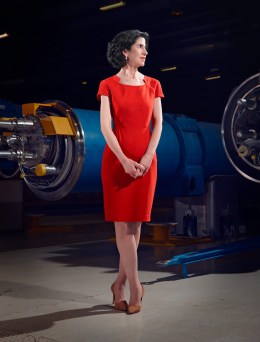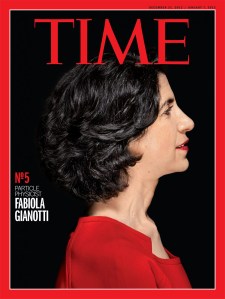
Ten days is an awfully long time to have a toothache — especially with the kind of week Fabiola Gianotti had ahead of her. It was December 2011, and the annual seminar at the European Organization for Nuclear Research — better known as CERN — was imminent. Gianotti, one of CERN’s head scientists, was preparing to present preliminary findings on the hunt for the Higgs boson, the elusive particle that physicists had been seeking for the better part of half a century. Gianotti and the thousands of other scientists who work at CERN’s Large Hadron Collider (LHC) were getting very close to bagging the thing, and she was eager to share what she knew. But there was the matter of that toothache.
So she took a drugstore painkiller, then started taking two when one didn’t work, then went to three. Finally she woke up the night before the seminar with a raging fever and chills and had to be rushed to the hospital for emergency dental surgery. When she was done, the doctor told her she had to stay home. “I said, ‘O.K., I can stay home — for 20 minutes,’” she says. That was the time she needed to race back to her house, take a shower and get to CERN.
(VIDEO: The Higgs Boson, Particle of the Year)
It was an admirable case of a leader soldiering on in the face of pain, but Gianotti’s reputation was already legendary. Her native smarts and intuitive people skills had earned her a spot managing a team of 3,000 at the greatest research facility physicists have ever built. And all that was before this summer, when she and her CERN colleagues announced that, yes, they had well and truly captured the Higgs. In doing so, they had nailed the particle that gives other fundamental particles their mass. That in turn completed the so-called standard model of physics, the grand framework that ties together the universe’s three great forces — the strong force, the weak force and electromagnetism — and governs the behavior of subatomic particles. Look around at the familiar universe of planets and suns and moons and people. What happened at CERN helps explain why they exist as they do.
The announcement caused the kind of global sensation you don’t always see in response to a scientific discovery, and three names earned an equally unusual level of fame — Gianotti, who headed one of the experiments that confirmed the Higgs; her colleague Joe Incandela, who led the other; and Rolf Heuer, the research director of CERN. It was Gianotti who perhaps received the most attention, principally for her leadership role and her manifest gifts but occasionally for a reason as predictable as it is misguided: her gender. Physics is a male-dominated field, and the assumption is that a woman has to overcome hurdles and face down biases that men don’t.
But that just isn’t so. Women in physics are familiar with this misconception and acknowledge it mostly with jokes. Of course there are many women in leadership positions at CERN, said one physicist. Why do you think the experiments have been so successful? If you want to know the real reason Gianotti, 51, deserves the attention she’s gotten lately, you need to get to know her better.
Gianotti’s background is different from that of the ordinary particle experimenter — if there is such a thing. Her mother studied literature and music; her father is a retired geologist. When she began her high school studies in Milan, she seemed to be taking after her mother, focusing on literature, art history, philosophy and ancient Latin and Greek. Math and physics were part of her curriculum but way at the bottom. Her interest in philosophy and the big questions it raises, however, actually led her away from the humanities. “I thought that physics, the little bit I knew of it, would allow me to address those questions in a more practical way,” she says. “I mean, being able to give answers.”
(Interactive Panorama: Step Inside the Large Hadron Collider)
It’s not likely that the answers she had in mind back then concerned what gives particles their mass, but she eventually chose that field because she was attracted to its fundamental nature. She decided to be an experimenter, working with the complex hardware of physics, for equally primal reasons. “I like manual things,” she says, “doing things with my hands, the feeling of touching.” What’s more, she was involved in her university studies in the early 1980s, when the W and Z gauge bosons — which mediate the weak force — had just been discovered at CERN, so she knew this was a field on the move.


